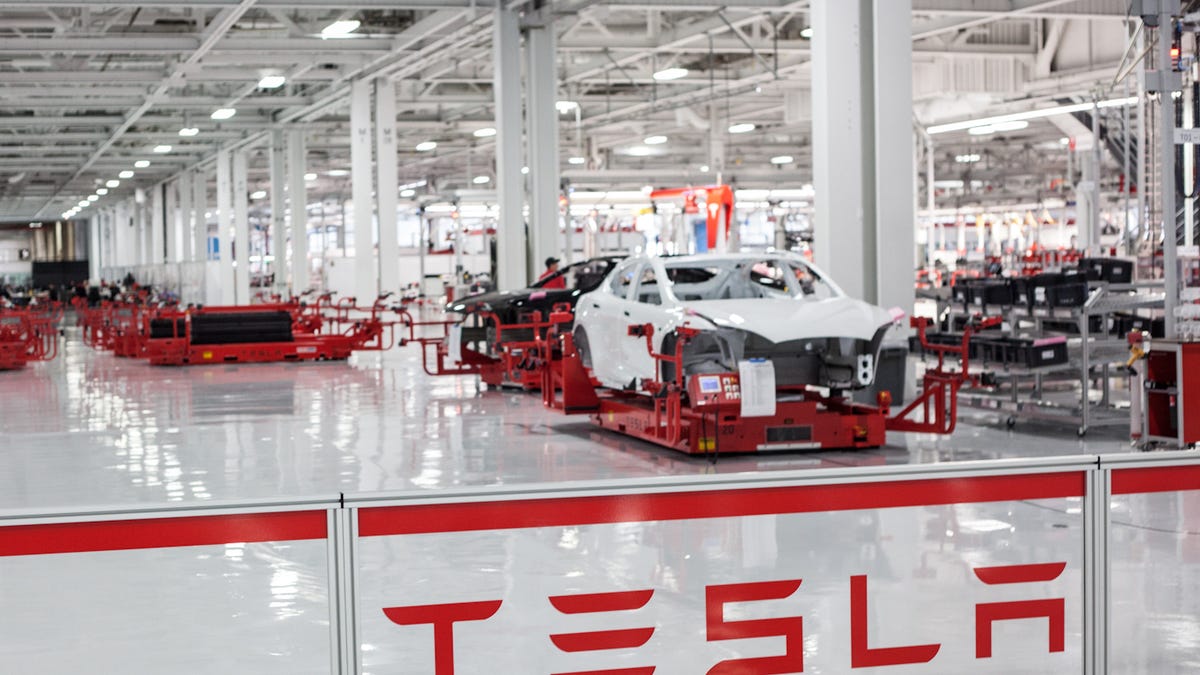Tesla Stock Split to Occur Aug. 24 After Shareholders Approve Plan
Shares will trade at the split-adjusted price the day after the 3-for-1 stock split.

Tesla announced the date for its long-awaited stock split in an SEC filing Friday afternoon. Shareholders will receive two additional shares per each owned at market close on Aug. 24. Tesla shares will then trade at the split-adjusted price when the stock market opens on Aug. 25.
Thursday evening, Tesla shareholders completed the vote to authorize the 3-for-1 stock split at the company's annual shareholders meeting in Austin, Texas. The board of directors moved quickly to confirm the poll results and announce the stock split. Those who could not attend the meeting in person were able to cast their votes by proxy -- or online -- in the weeks leading up to the event.
Tesla (TSLA) closed at $864.51 on Friday. If the stock split were to occur at this price, it would result in an individual share price of $288.17, with three times as many shares in circulation.
Below we'll explain what a stock split is, how it affects investors and the share price, and why companies would be interested in pursuing a stock split.
What is a stock split?
A stock split divides existing shares into smaller pieces for greater accessibility. This causes the total share count to go up and the stock price to go down. You can picture a stock split as someone cutting a freshly made pizza; cutting the pizza into slices doesn't change anything fundamentally, it just makes the pizza easier to share and eat.
In other words, consider the 3-to-1 stock split in regard to a stock priced at $300. If you owned one share of the company, on the day of the stock split, that one $300 share would turn into three $100 shares.
How do stock splits affect options?
Options are affected the same way shares are, assuming they expire after the day of the split. For example, if you have a $900 strike call and a 3-to-1 split takes effect, you'd end up with three $300 strike calls. This scenario gives you more flexibility in your choice to exercise or sell.
Why do companies split their stock?
A company may issue a stock split for many strategic reasons. Most often, a company foresees major growth on the horizon and it wants to keep shares at an accessible price for retail investors. The stock also becomes more accessible to employees who receive stock-based compensation, like they do at Tesla.
There can be other strategic goals as well. For instance, the Dow Jones Industrial Average, or Dow, is a prominent stock index that's price-weighted. Because stock price directly affects the weighting in this index, it's a component considered for acceptance into the Dow. Companies with high share prices may not be admitted if they would disrupt the weighting too greatly.
Stock splits shouldn't be confused with public offerings of stock, where new stocks are issued by the company for sale to the public to raise money to support the business.
Do stock splits raise the stock price?
Fundamentally, a stock split shouldn't have an effect on the stock price. Nothing really changes, though research from Bank of America does suggest that companies that split their stock perform roughly 16% better than other companies in the 12 months following a split, according to Reuters.
However, this could be an indirect correlation and may be related in part or in full to the company's growth and other factors. Stock splits generally signal that the company is growing and confident. But those who trade stock and options often take advantage of the split environment for trading, which can create a lot of volatility in the markets before and after the split.
How will Tesla's stock split?
For this stock split, Tesla and its shareholders will have to take a few extra steps compared with last time, when the board simply announced its decision on Aug. 11, 2020, and swiftly split the stock on Aug. 31, 2020.
Public companies are capped with respect to how many shares they're allowed to have in circulation, which is enforced by the SEC. Tesla is near its limit after the last split and public offering (in December 2020) and only has the bandwidth to issue a 2-to-1 split under current conditions without shareholder approval.
After that, the board of directors will vote to approve a stock split and likely announce it shortly after. The split will be completed by the issuance of a share dividend to stockholders. For example, in the 3-to-1 split, for each share you hold by the cutoff date, you'll be issued two more shares on the day of the split. It's important to note that this is a onetime share dividend, unlike recurring cash dividends that are familiar to many investors.

